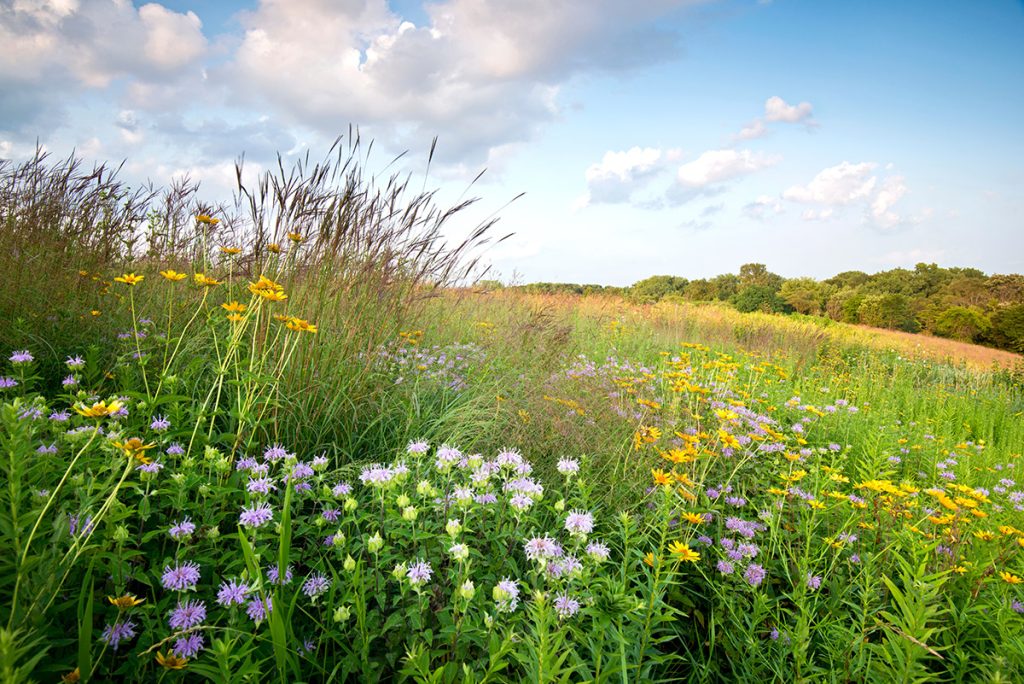
If you’re new to the Conservation Reserve Program (CRP), choosing the right CRP seed mix for your project can be a challenge. Due to the strict requirements from NCRS and other critical factors, it can be difficult to determine what seeds will fit your needs and produce the best outcomes.
To help, we’ve compiled a list of 6 ways to ensure you’re purchasing the right CRP seed mix for your land. By selecting a seed mix that aligns with these principles, you can establish a healthy, successful stand.
1. Review your specific CRP practice guidelines
When participating in CRP, there are many different conservation practices (CPs) you may enroll in. Each CP targets a specific area of conservation that you can implement on your land. For example, CP-2 is for the establishment of permanent native grasses, while CP4-D is for the creation of permanent wildlife habitat.
Each CP is geared towards a specific goal, and thus, requires specific types of seed. Once you have signed up for a CP, ensure that you review your practice guidelines and your contract to determine which types of seeds are approved for use.
2. Verify your local ecotype
In addition to your specific practice requirements, you must choose a seed mix appropriate for your region. For most CRP practices, your seed mix should contain only native species. The local ecotype of each species indicates where that species evolved and was cultivated over time.
Native species with the correct local ecotype will have evolved and adapted to your specific region over thousands or even millions of years. This allows native plants to enter into a symbiotic relationship with your land and soil. Your seed mix will thrive under optimal conditions while also benefitting other local plant species and wildlife in your ecosystem.
3. Take life cycles into account
Every plant species falls under one of three different life cycles. These cycles dictate when they’ll seed, blossom, and grow, as well as their lifespan. Annuals germinate and grow within a single year, while biennials take two seasons, and perennials can live for multiple years.
Because CRP contracts are 10- to 15- years long, most practices require the use of perennials. Some biennials may be included as needed for your practice’s requirements and goals. When choosing a seed mix, make sure it includes seeds with the proper life cycle.
4. Choose a diverse mix of species
As mentioned above, the majority of CRP practices require native species to be planted. However, it’s important to not only choose native plants but to select a diverse seed mix.
Cultivating a variety of plants is particularly important for attracting pollinators to your land. If you’re enrolled in a pollinator-focused practice like CP-42, a mix that incorporates different colored flowers and bloom periods is the key to attracting a diverse group of pollinators.
5. Manage your seed tags
When purchasing seeds, take careful note of the seed tags. Each seed mix should provide its own tags, which list the seed name, origin, purity, germination rate, and weed testing information. Inaccurate or mislabeled seed tags can lead to failed stands or the spread of noxious weeds, like Palmer amaranth.
In addition to ensuring you’re planting the correct species, seed tags are also required to receive cost-share reimbursement for CRP. Keep and properly document your seed tags for prompt, accurate repayment.
6. Purchase high-quality seeds from a trusted distributor
For a successful stand, ensure that the seeds you purchase are high-quality. Many first-time CRP participants make the mistake of buying substandard or poor-quality seeds, leading to disappointing results.
In the market for a superior quality seed mix? Look no further than All Native Seed. As a subsidiary of FDCE, we have been perfecting our CRP-ready seed mixes since 2003. With our pre-processed, pre-treated seeds, your stand will germinate and grow faster to produce a better, stronger stand. Contact us today to order quality seed at a competitive price.
